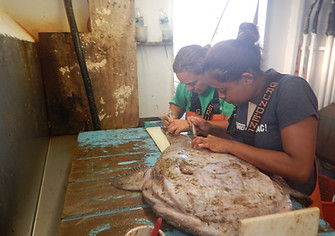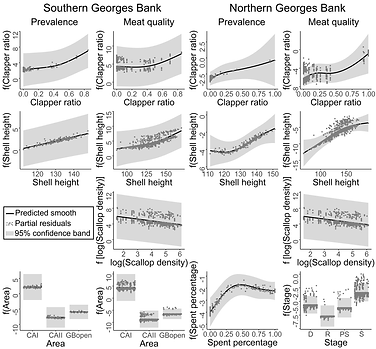Seasonal surveys of bycatch in the scallop fishery
Project leads: Luisa Garcia, Liese Siemann, and Farrell Davis
Funded by: NOAA Sea Scallop Research Set-Aside
This long-term project examines the temporal and spatial variability of bycatch species in the Atlantic sea scallop fishery on Georges Bank. CFF has been conducting a seasonal bycatch survey of Georges Bank for over a decade. While the surveys have been operating with a fixed grid design and standardized tow parameters since 2010, the location of the surveys have been adapted to address different management concerns. In 2011, the primary objective was to quantify yellowtail flounder bycatch rates in comparison to scallop meat yield, with the goal of optimizing the harvest of scallops while minimizing impacts to the yellowtail flounder stock. The project has since expanded and now incorporates: 1) examining bycatch rates of all groundfish species; 2) identifying seasonal changes in the maturity and reproductive cycles of groundfish and scallops; 3) comparing gear modifications to standard designs; 4) examining, quantifying, and analyzing scallop meat quality (e.g., gray meats, orange nodules); 5) assessing lobsters for shell disease and dredge damage; and 6) identifying the presence of flatfish disease. During our most recent bycatch surveys, we have used a cover net on the experimental dredge to catch smaller individuals of species affected by the scallop fishery. This year's project will be conducted on eastern Georges Bank, a hotspot for yellowtail flounder and juvenile scallop bycatch, using a dredge equipped with our cover net.



Because the seasonal bycatch survey provides a long-term data set on scallop condition and environmental parameters, CFF has been able to build spatiotemporal models to predict scallop conditions like gray meats.


